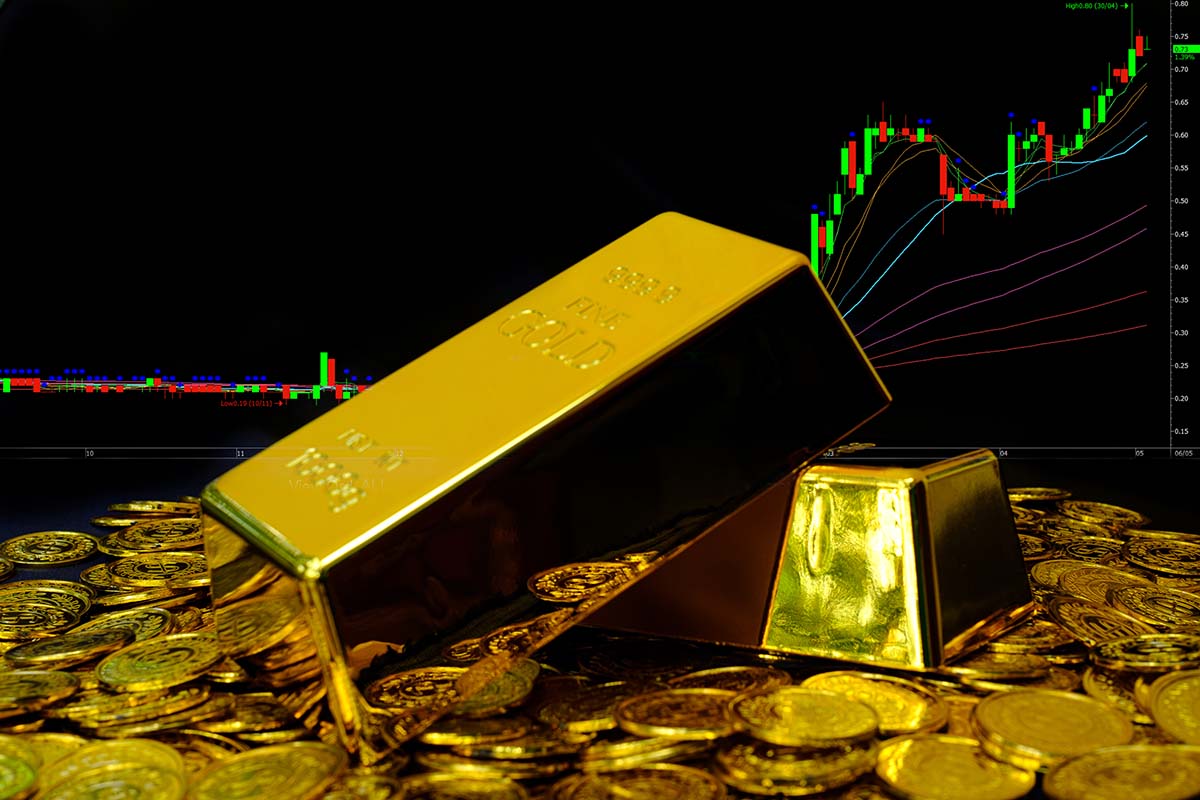Bullion Exchange Products and Trading Mechanisms
In the worldwide market for precious metals, institutions, investors, and traders have opportunities for engagement. Bullion exchange items form a crucial element of this market, significantly contributing to the diversification of investment portfolios, among other functions. This article shall discuss some of these investment portfolios and trading mechanisms on bullion exchanges and assess the pros and cons of investing in these trades.
What is the Bullion Exchange of Products?
Investment instruments that are traded on bullion exchanges are called bullion exchange products. It is ownership of physical precious metals, such as gold, silver, etc., through tradable financial instruments that have been standardized. The products are fashioned to facilitate the efficient storage, transportation, and trading of precious metals. With the information available from the Task Force on Digital Financing, all the necessary details, from review to investment in bullion exchange products, have been provided. Bullion exchange allows participation without the need for physical possession. The exchange-traded fund (ETF) is one of the most common bullion exchange products, propped up by physical holdings of the respective precious metal.
Types of Bullion Exchange Products
Below are the different types of bullion exchange products available to market participants.
Futures Contracts
These are standardized agreements for trading a specific quantity of precious metal at a set price on a future date. Traders can leverage by controlling larger positions with a smaller upfront investment while trading on this exchange instrument.
Options Contracts
These are versatile tools that allow investors to speculate, generate income, and hedge. It potentially yields substantial gains because it offers limited risk on its premium payments. Although option contracts give the right, it doesn’t give holders the obligation to buy (call option) or sell (put option).
Exchange-traded funds (ETFs)
ETFs net asset value is usually tied to the metal’s market price because of the ease of trading, transparency, and liquidity they offer. It is possible to track the performance of a group of metals through bullion-backed exchange-traded funds.
Physical Bullion Bars and Coins
These are tangible physical assets in their raw forms, such as gold, platinum, palladium, and silver. They come in various weights, sizes, and purity levels to suit different investors’ budgets and preferences. Although direct ownership is a form of wealth preservation, the holder will incur costs for its storage.
Bullion Certificates
These documents in digital or hardcopy represent ownership of a specified quantity of precious metal stored in secure facilities. They can be transferred electronically, enabling seamless trading and settlement.
Over-the-Counter (OTC) Contracts
These are agreements negotiated directly between the buyer and the seller to exchange precious metals. It offers flexibility and is commonly used by miners, refiners, and institutional investors to tailor agreements to specific needs. Visit https://commodity.com/ to learn more about this and many other commodities market concepts and practices.
Bullion Pool Accounts
This option allows the ownership of a fractional interest in a larger quantity of metal by a custodian. This custodian manages the pool of funds contributed by several investors. Bullion pool accounts are good for those who crave exposure for trading without the complexities of security and storage.
Trading Mechanisms in Bullion Exchanges
In this section, we shall consider trading mechanisms within bullion exchanges.
Electronic Trading Platforms
Orders are submitted electronically through trading platforms in real-time. Participants can access price quotes, market data, order execution, and trade confirmations.
Order Types and Execution
Efficient price discovery and liquidity provision are enhanced by allowing participants to control the timing and price of their trades. Various types of trade exist, such as market orders, limit orders, stop orders, and complex orders.
Clearing and Settlement
This process involves a clearinghouse where trades are properly validated, matched, and settled. The clearinghouse acts as an intermediary between buyers and sellers. Its advantages are that it minimizes counterparty risk, enhances transparency, and ensures the smooth flow of transactions.
Market Participants
Bullion exchanges involve a lot of market participants, each contributing to the functionality and liquidity of the market. These participants are:
Hedgers
Traders use the exchange to manage price risks associated with their operations. For instance, the futures contract of a mining company can be used to lock in prices for future production.
Speculators
They capitalize on anticipated price changes to leverage various products like futures and options.
Arbitrageurs
Arbitrageurs earn risk-free profits by exploiting price discrepancies between different markets or instruments. Click here to read more on arbitrage or factors affecting precious metal arbitrage.
Institutional Investors
Institutional players utilize bullion exchange products to manage risks and diversify their portfolios.
Retail Investors
Individual access is possible through brokers and trading platforms, enabling investors to participate in the precious metals market.
Price Discovery Mechanism
Exchanges provide real-time aggregated snapshots of the market’s supply and demand dynamics. These established prices influence the global benchmark of prices, serving as a reference point for pricing in other transactions or markets.
Leverage and Margin Trading
Leveraging involves using a fraction to control a larger position, while clearinghouses and exchanges set margin requirements. Margins are set to ensure participants meet their obligations.
Benefits and Risks of Bullion Exchange Products and Trading Mechanisms
Let’s succinctly consider the advantages and challenges of trading these products.
Benefits of Bullion Exchange Products and Trading Mechanisms
Here are some of the benefits: –
Diversification
It is a means of diversifying investment portfolios beyond normal assets like bonds and stocks.
Risk Management
Participants can manage price risks and protect themselves against adverse price movements by locking in prices.
Liquidity and Accessibility
Participants can easily enter and exit trades because they occur on established exchanges with high liquidity.
Portfolio Hedging
Hedging against various geopolitical and economic uncertainties is possible through investment in bullion exchange products.
Risks of Bullion Exchange Products and Trading Mechanisms
The risks are equally daunting. Here are some of them.
Price Volatility
Rapid price fluctuations may lead to significant losses for traders who do not manage risks effectively.
Counterparty Risk
The term – counterparty risk implies that the non-defaulting party may face challenges in receiving their expected payment because of the default of the other party.
Market Manipulation
False information, rumors, or coordinated trading activities can distort market indices and influence prices and investors negatively.
Regulatory and Legal Risks
Unexpected legal developments or changes in regulations can impact trading strategies and outcomes.
Conclusion
Exchange products for precious metals are crucial for trading, allowing investors to engage without physical ownership. These products include futures, options, ETFs, and innovative instruments catering to diverse investment strategies.
Trading mechanisms on bullion exchanges, like electronic platforms and efficient clearing, boost market efficiency. These mechanisms offer benefits such as diversification and risk management, but an awareness of price volatility, leverage, and regulatory and legal risks is essential to avoid investment pitfalls. Practical risk management skills and a thorough understanding of market dynamics are vital for successfully using these products for investment, speculation, or hedging.




















